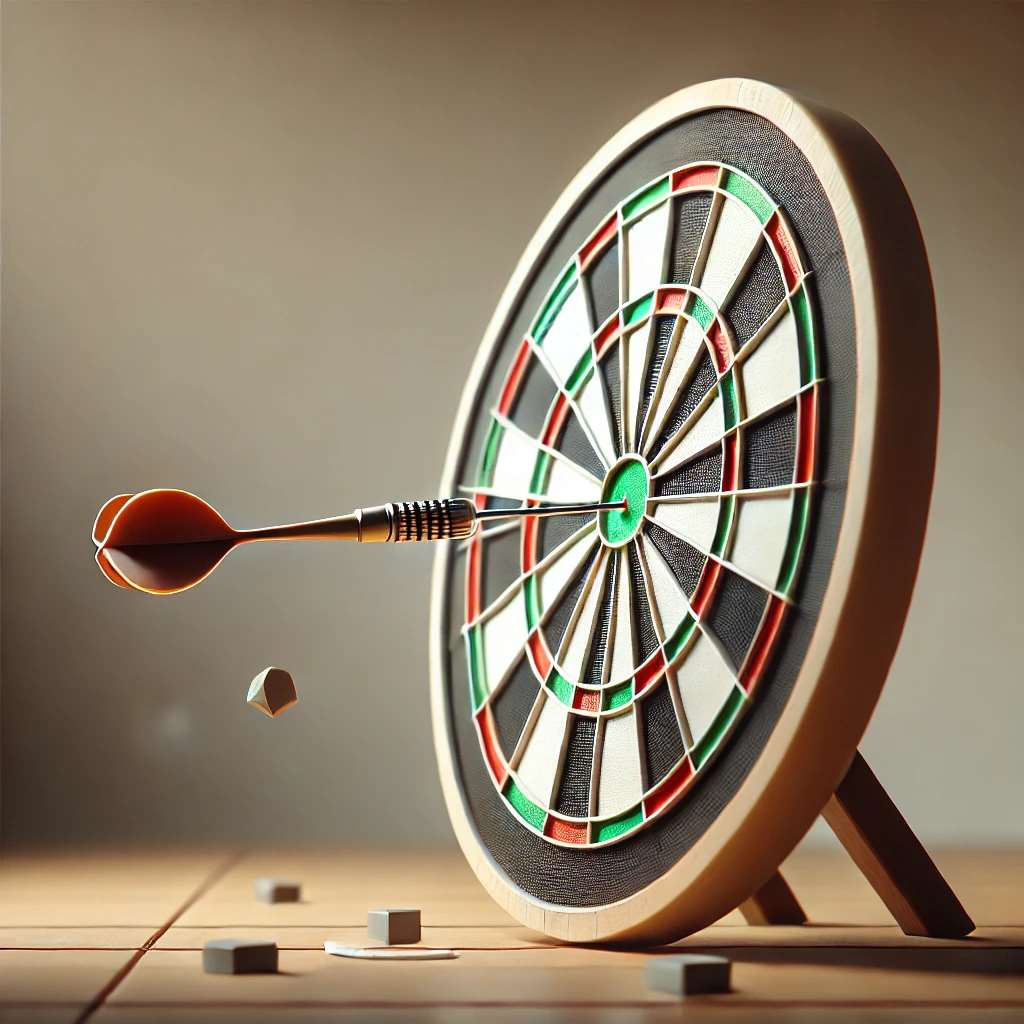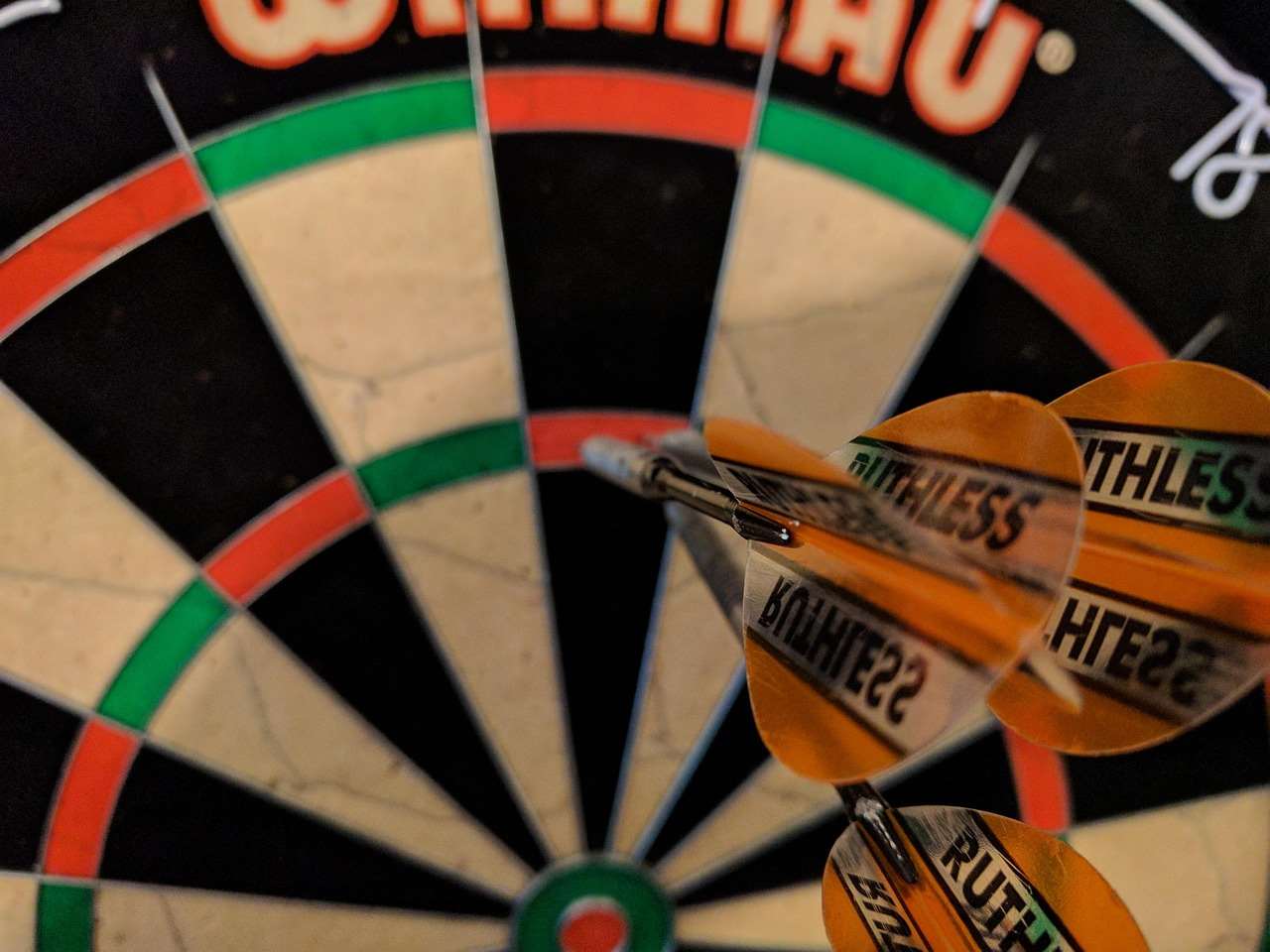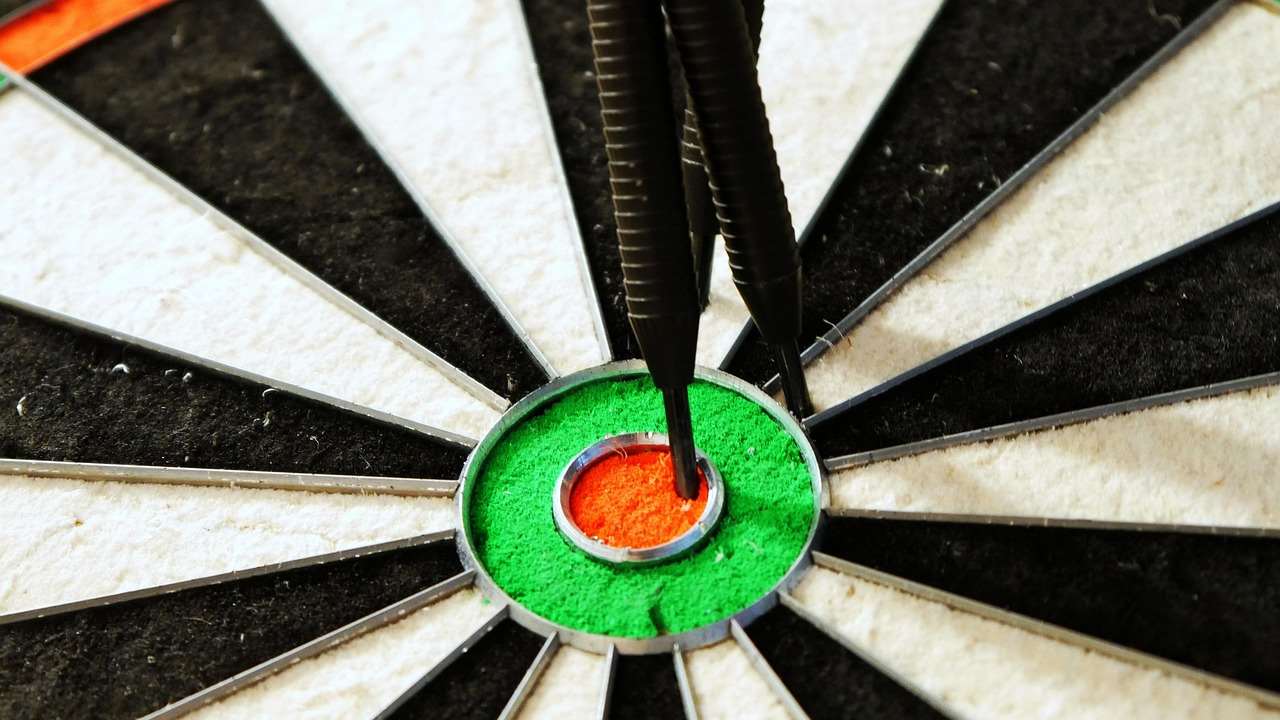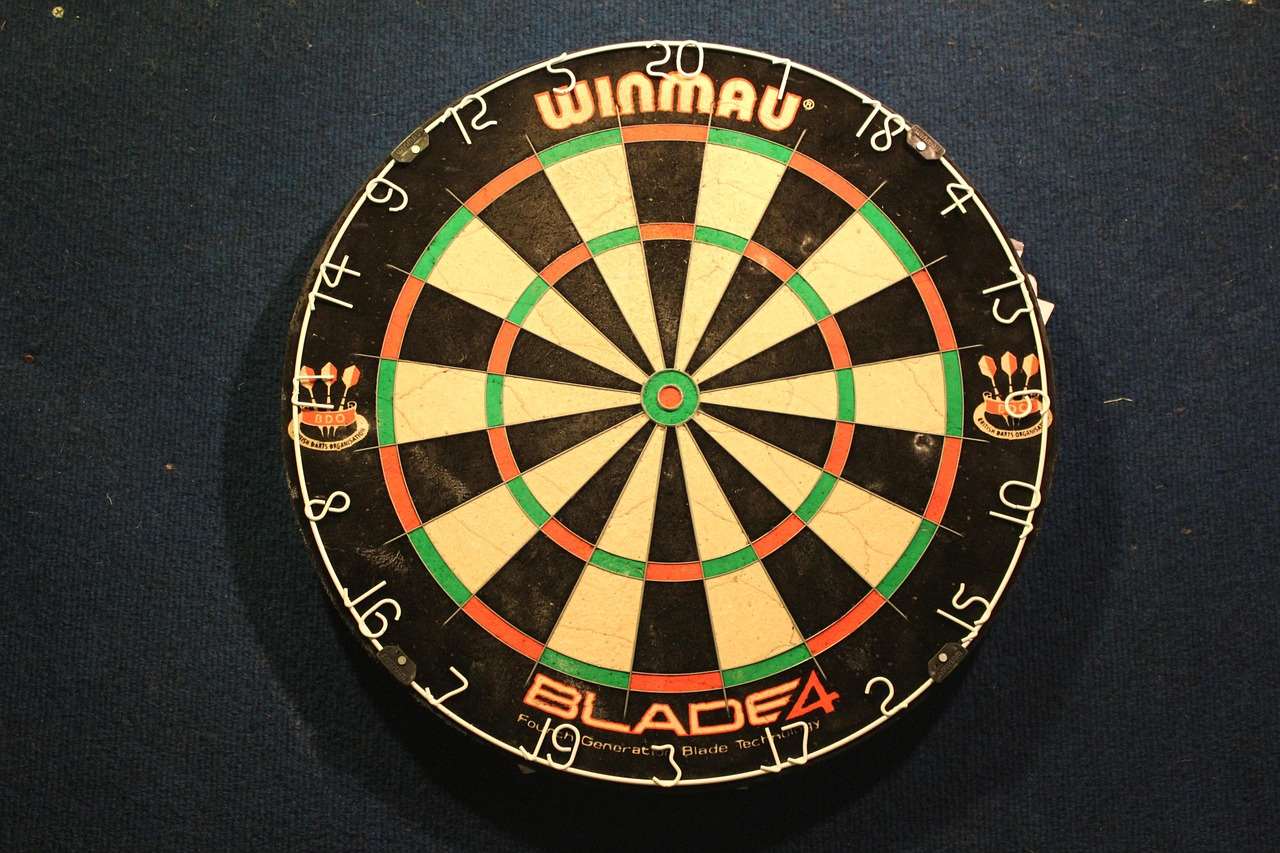Understanding the correct dartbord afmetingen is crucial for fair play and accurate scoring, whether you’re a casual player or a seasoned pro. This article will cover standard dartboard dimensions, setup instructions, and other essential information to ensure you have a proper dartboard setup. We’ll also explore related aspects like acceptable materials, mounting heights, and valuable tips for maintaining your board.
⚠️ Still Using Pen & Paper (or a Chalkboard)?! ⚠️
Step into the future! The Dart Counter App handles all the scoring, suggests checkouts, and tracks your stats automatically. It's easier than you think!
Try the Smart Dart Counter App FREE!Ready for an upgrade? Click above!
The Importance of Standard Dartbord Afmetingen
Why are standard dartbord afmetingen so important? The simple answer is fairness and consistency. Imagine playing a game where the target size changes every time you move to a new location. It would be nearly impossible to develop any consistency or skill. Standardized dimensions ensure that every game, regardless of location, is played on a level playing field. This allows players to accurately judge distances, angles, and target sizes, leading to improved performance and a more enjoyable experience.
Beyond fairness, adhering to official dartboard dimensions is essential for sanctioned tournaments and leagues. Governing bodies like the Professional Darts Corporation (PDC) and the World Darts Federation (WDF) enforce strict rules regarding equipment specifications. Using a non-compliant dartboard can lead to disqualification, invalidating your scores and potentially impacting your competitive standing.
Finally, understanding the correct dartboard dimensions allows for better practice. By consistently practicing on a board that meets official standards, you develop muscle memory and improve your accuracy. This consistent practice translates directly to better performance in actual games, whether you’re playing against friends or competing in a professional tournament.

Official Dartbord Afmetingen: A Detailed Breakdown
Let’s delve into the specific measurements that define a standard dartboard. These dimensions are critical for ensuring a regulation playing experience. Knowing these measurements is useful not just for setup, but also for understanding the geometry of the game and how it affects your throws.
Overall Diameter
The overall diameter of a standard dartboard is 17 ¾ inches (451 mm). This is the measurement from one edge of the board to the opposite edge. It’s important that this dimension is accurate, as it affects the spacing of the segments and the overall target area.
Bullseye Dimensions
The bullseye is the central point of the dartboard, and hitting it scores the highest number of points. The bullseye is comprised of two parts:
- Outer Bull (Double Bull): The outer red ring has a diameter of 1.27 inches (32 mm) and is worth 25 points.
- Inner Bull (Single Bull): The inner green circle has a diameter of 0.5 inches (12.7 mm) and is worth 50 points.
Treble and Double Rings
The treble and double rings are narrow bands that circle the dartboard, located approximately halfway between the bullseye and the outer edge. Hitting these rings triples or doubles the score of the corresponding segment.
- Treble Ring Width: The treble ring has a width of 0.315 inches (8 mm).
- Double Ring Width: The double ring also has a width of 0.315 inches (8 mm).
Segment Dimensions
The dartboard is divided into 20 equal segments, each representing a number from 1 to 20. The shape and size of these segments are crucial for accurate scoring.
- Segment Angle: Each segment has an angle of 18 degrees (360 degrees / 20 segments).
- Segment Length: The segments extend from the bullseye to the outer edge of the board, with varying lengths depending on their position relative to the treble and double rings.
Wire Dimensions
The wires that separate the segments play a critical role in defining the scoring areas. Their thickness can impact how darts land and whether they stick in the board.
- Wire Thickness: Standard dartboard wires are typically thin, often made of rounded or bladed wire to minimize bounce-outs. The exact thickness varies by manufacturer, but the goal is to create a wire that is durable yet doesn’t significantly interfere with dart trajectories.
Setting Up Your Dartboard: Height and Distance
Even with the correct dartbord afmetingen, improper setup can ruin your game. The height and throwing distance are just as crucial as the board itself. Getting these measurements wrong can lead to inconsistent throws and frustration.
Dartboard Height
The official height of the dartboard is measured from the floor to the center of the bullseye. This height must be:
- 5 feet 8 inches (1.73 meters)
Use a measuring tape to accurately determine this height. A slight variation can impact your aiming point, particularly over long periods of play.
Throwing Distance
The throwing distance, also known as the oche, is the distance from the face of the dartboard to the toe line where the player stands. The official throwing distance is:
- 7 feet 9 ¼ inches (2.37 meters)
This measurement should be taken from the front of the dartboard (the playing surface) to the oche. It is very important to measure from the face and not the wall the dartboard hangs on. You may find that practicing on your new setup encourages your darts drinking game ideas!
Diagonal Measurement
There’s also a diagonal measurement you can use to verify both the height and distance. Measure from the bullseye to the oche line; this measurement should be:
- 9 feet 7 3/8 inches (2.93 meters)
Dartboard Materials and Construction
The material of the dartboard affects its durability, scoring potential, and overall playing experience. While dartbord afmetingen are standardized, the materials used in construction vary.
Sisal Fiber
Most professional-grade dartboards are made from sisal fiber, a natural fiber harvested from the sisal agave plant. This material is ideal because it’s self-healing; when a dart is removed, the fibers naturally close up, minimizing wear and tear. Sisal boards offer excellent durability and a consistent playing surface.
Cork
Some lower-priced dartboards are made from cork. Cork boards are less durable than sisal boards and tend to show wear and tear more quickly. They are typically used for casual play.
Paper
Paper dartboards are the least expensive option and are generally used for novelty games or children’s play. They offer very little durability.

Maintaining Your Dartboard for Longevity
Proper maintenance can significantly extend the life of your dartboard and ensure consistent performance. While the dartbord afmetingen will remain constant, the board’s condition can deteriorate without care.
Rotating the Board
Regularly rotate your dartboard to distribute wear evenly. Focusing on the same numbers repeatedly will cause those segments to deteriorate faster than others. Most dartboards have a removable number ring, allowing you to easily rotate the board. Rotating the board after every few games will extend its lifespan.
Removing Darts Correctly
Remove darts with a twisting motion to avoid pulling out large chunks of sisal fiber. Pulling darts straight out can damage the board over time. A gentle twist as you pull helps the dart release more easily.
Humidity Control
Avoid exposing your dartboard to extreme humidity or temperature changes. Excessive moisture can cause the sisal fibers to swell and warp, while dry conditions can lead to cracking. Keep your dartboard in a climate-controlled environment.
Cleaning
Occasionally, you can clean your dartboard with a soft brush to remove dust and debris. Avoid using water or any cleaning solutions, as these can damage the sisal fibers. A simple brushing is usually sufficient.
Common Mistakes to Avoid When Setting Up Your Dartboard
Many people make easily avoidable mistakes when setting up their dartboard. These errors can affect gameplay and even damage the board. Knowing the correct dartbord afmetingen is only half the battle; proper installation is key.
Incorrect Height
One of the most common mistakes is setting the dartboard at the wrong height. Always measure from the floor to the center of the bullseye and ensure it’s exactly 5 feet 8 inches (1.73 meters). Double-check your measurements to avoid errors.
Inaccurate Throwing Distance
Another frequent mistake is miscalculating the throwing distance. Measure from the face of the dartboard to the oche, ensuring it’s precisely 7 feet 9 ¼ inches (2.37 meters). Using the correct throwing distance is essential for developing consistent throws.
Unstable Mounting
A wobbly or unstable dartboard can be frustrating and even dangerous. Ensure your dartboard is securely mounted to a solid wall using appropriate hardware. A dartboard surround can also help protect your wall from stray darts.
Poor Lighting
Inadequate lighting can make it difficult to see the target and can lead to eye strain. Install a dedicated dartboard lighting system to provide consistent and even illumination. Proper lighting improves visibility and enhances your overall playing experience. Many players will find more success learning how to hit doubles in darts with proper lighting.

Advanced Tips for Improving Your Dart Game
Once you have your dartboard set up with the correct dartbord afmetingen and are familiar with the basics, you can start focusing on more advanced techniques to improve your game.
Developing a Consistent Stance
Your stance is the foundation of your throw. Experiment with different stances to find one that feels comfortable and stable. Maintain a consistent stance throughout your game to improve accuracy.
Mastering Your Grip
The way you grip the dart can significantly affect your throw. Experiment with different grips to find one that provides optimal control and release. A firm but relaxed grip is generally recommended.
Perfecting Your Throwing Motion
A smooth and consistent throwing motion is crucial for accuracy. Focus on keeping your arm straight and following through with your throw. Avoid jerking or snapping your wrist, as this can lead to inconsistent results.
Mental Game
The mental aspect of darts is just as important as the physical. Stay focused and positive, even when you’re not throwing well. Develop a pre-throw routine to help you stay calm and concentrated. You may even find yourself someday at the world darts championship entrance!
Understanding Different Dartboard Types: Bristle vs. Electronic
While this article primarily discusses standard bristle dartboards, it’s worth briefly mentioning electronic dartboards, as they offer a different playing experience. While dartbord afmetingen are generally similar, there are key differences.
Bristle Dartboards
Bristle dartboards, as discussed throughout this article, are the traditional type of dartboard. They are made from sisal fibers and are used in professional and amateur competitions. They require steel-tipped darts.
Electronic Dartboards
Electronic dartboards are made from plastic and have small holes where the darts stick. They automatically calculate scores and often have built-in games. They require soft-tipped darts. While the scoring area aims to adhere to standard measurements, they are often smaller than a standard board, and the segments are separated by thicker plastic.
Key Differences
- Scoring: Bristle dartboards require manual scoring, while electronic dartboards automatically calculate scores.
- Darts: Bristle dartboards use steel-tipped darts, while electronic dartboards use soft-tipped darts.
- Durability: Bristle dartboards are generally more durable than electronic dartboards.
- Noise: Electronic dartboards can be noisy due to the sound of the darts hitting the plastic surface and the electronic scoring system.

Finding the Right Dartboard for Your Needs
With so many dartboards available, choosing the right one can be challenging. Consider your budget, skill level, and intended use when making your decision. For instance, you might even want to find a way to dart barrels anfertigen lassen for a custom experience.
Budget
Dartboard prices vary widely, from inexpensive paper boards to high-end sisal boards. Determine your budget before you start shopping.
Skill Level
Consider your skill level when choosing a dartboard. Beginners may be fine with a less expensive cork or electronic board, while more serious players should invest in a high-quality sisal board.
Intended Use
How you plan to use the dartboard will also influence your decision. If you’re just playing casually with friends, a basic board may suffice. If you’re planning to compete in tournaments, you’ll need a regulation-size sisal board that adheres to the precise dartbord afmetingen.

Conclusion
Understanding dartbord afmetingen is paramount for fair play, consistent practice, and competitive success in darts. This article has provided a comprehensive guide to standard dartboard dimensions, setup procedures, maintenance tips, and common mistakes to avoid. By following these guidelines, you can ensure that your dartboard setup meets official standards and provides an optimal playing experience. Remember the proper height (5’8″), throwing distance (7’9 1/4″), and the overall diameter (17 3/4″) to start. Also, remember that knowing Free dart score app can help in keeping track of your games. So, grab your darts, set up your board correctly, and start honing your skills today!
Hi, I’m Dieter, and I created Dartcounter (Dartcounterapp.com). My motivation wasn’t being a darts expert – quite the opposite! When I first started playing, I loved the game but found keeping accurate scores and tracking stats difficult and distracting.
I figured I couldn’t be the only one struggling with this. So, I decided to build a solution: an easy-to-use application that everyone, no matter their experience level, could use to manage scoring effortlessly.
My goal for Dartcounter was simple: let the app handle the numbers – the scoring, the averages, the stats, even checkout suggestions – so players could focus purely on their throw and enjoying the game. It began as a way to solve my own beginner’s problem, and I’m thrilled it has grown into a helpful tool for the wider darts community.